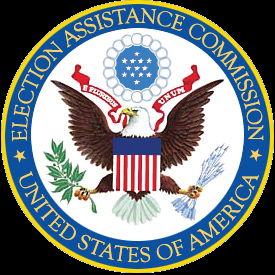2008 Election Administration and Voting Survey
2014 Election Administration and Voting Survey
EDS_2008 Section B_OMB-FINAL
2008 Election Administration and Voting Survey
OMB: 3265-0006

Section B
U.S. ELECTION ASSISTANCE COMMISSION
 2008 Election
Administration & Voting Survey
2008 Election
Administration & Voting Survey
Statutory Overview
In order to better understand state laws governing federal elections, the U.S. Election Assistance Commission, as part of its biennial Election Administration and Voting Survey, is collecting information on state election laws and procedures. These answers will help us to better understand the quantitative data relating to the 2008 general election that we are collecting from all U.S. states and territories.
We understand that responding to this Statutory Overview may require significant staff time on the part of your office. Please be assured that we have attempted to minimize the burden, and we appreciate your cooperation in this very important project.
DIRECTIONS
Please provide your state’s legal citation for the responses to these questions (where applicable).
Please answer each question to the best of your ability. If terms are ambiguous or not relevant, please explain why. If a question is not applicable to your state, please explain why. If a definition or term lacks legal standing but is widely understood in practice, please explain. If election procedures vary at the local level within your state, please explain to the best of your ability.
If state laws are currently enjoined or otherwise blocked from enforcement by a state or federal court, please specify.
SECTION A: GENERAL
A1. How does your state define the following terms related to votes and ballots? Please provide your state’s legal citation defining these terms, where applicable.
Over-vote
Under-vote
Blank ballot
Void/Spoiled ballot
Provisional/Challenged ballot
Absentee
Early voting
Active Voter
Inactive Voter
Other terms (please specify) ________________
A2. Please provide the legal citation for any significant changes to election laws or procedures that have been enacted or adopted since the previous Federal election. By “significant,” we do not mean routine or technical changes (such as changes to election district boundaries or polling place changes). However, we would like to learn about any new identification requirements for voters or registrants; changes in eligibility for voting or registering; adoption of alternative voting methods; and other changes that you believe represent a significant change in the way your state runs its elections.
SECTION B: VOTER REGISTRATION
B1. Is your state’s voter registration database system best described as a bottom-up, a top-down, or a hybrid? (Note: A bottom-up system generally uploads information retained at the local level and compiled at regular intervals to form the statewide voter registration list. A top-down system is hosted on a single, central platform/mainframe and is generally maintained by the state with information supplied by local jurisdictions. A hybrid is some combination of both systems described above.)
If your state has a bottom-up or hybrid system, how often do local jurisdictions transmit registration information to the state list?
B2. Please describe the process used in your state to move voters from the active list to the inactive list, and from the inactive list to the active list. Is a different process used for UOCAVA voters?
B3. Please describe your state’s process for removing voters from the voter registration rolls (not merely moving them from active to inactive). Please include information regarding notices and confirmations. Are these procedures the same for UOCAVA voters?
B4. Can your state’s voter registration database (or equivalent) share information electronically with your state’s drivers license agency (for example, to match records or trace changes in address)? Can your voter registration database be similarly linked with databases in any other state or federal agencies? Please describe these links, including any use of database matching to verify voter registration applications.
B5. Please describe how your state uses National Change of Address (NCOA). What
has been your state’s experience with using NCOA?
B6. Please describe your state’s voting eligibility requirements as they relate to individuals with a felony conviction. (For example, are convicted felons allowed to vote while in prison or while on parole or probation? Are voting rights automatically restored or does the individual have to apply for a pardon, certificate of eligibility or other similar certificate? Does an individual whose voting rights have been restored have to produce documentation of his/her status when registering to vote?)
B7. Does your state currently use the Internet in any way to facilitate voter registration? If yes, please describe how your state allows voters to use the Internet in the registration process (e.g., entire registration completed online; completed online but then must be printed, signed, and mailed by voter, etc.).
SECTION C: ELECTION ADMINISTRATION
C1. Please describe how all votes cast at a place other than the voter’s precinct of registration are tabulated (for example, please include descriptions of such votes as absentee ballots, mail-in ballots, votes cast at vote centers, provisional ballots, early voting locations, etc.).
a. Are the votes counted centrally or at the precincts?
b. If centrally tabulated, are the votes redirected to the appropriate
precinct for reporting in the canvass?
c. Are the absentee, mail, etc., votes reported separately for each precinct,
or are they added to the in-precinct results and reported as just a single
number?
d. How are UOCAVA ballots counted and reported?
C2. Does your state require a reason for voting absentee, or does your state allow no-excuse absentee voting? (If a reason is required, please provide the legal citation.)
C3. Does your state provide for in-person early voting? If so, how is early voting defined? When early voting is used, are the ballots counted at the precinct or at a central location? How are these votes reported?
C4. Do any jurisdictions in your state use a vote-by-mail system to replace (and not merely supplement) at-the-precinct voting in any elections?
C5. Please list each of the situations that require a provisional ballot in your state. Please provide the relevant legal citation for each situation.
C6. Does your state count provisional ballots of voters who are registered in different precincts, or are those ballots automatically rejected? Please describe the process used by local election officials in determining whether to count a provisional ballot.
C7. Please describe your state’s laws regarding post-election audits, if any.
C8. Please describe any state requirements for poll worker training.
SECTION D: ELECTION DAY ACTIVITIES
D1. Please describe your state’s process for capturing “over-vote” and “under-vote” counts.
D2. What identification does your state require from voters in the following situations:
a. registering to vote;
b. casting an in-person ballot;
c. casting a mail-in or absentee vote;
d. casting a ballot under UOCAVA;
e. any other stage in registration or voting process in which identification is required (please specify).
D3. Please describe your state’s laws regarding access to the polling place for election observers. Election observers are people allowed inside the polling place who are not poll workers, election officials or voters. If decisions on access to observers are left to local jurisdictions, please explain.
SECTION E: OTHER
E1. Under HAVA, Section 402, states are required to have in place administrative complaint procedures to remedy grievances. Has your state revised its administrative complaint procedures since they were first implemented? If so, how?
E2. Please add any additional comments or information about your state’s election administration processes that would help to inform the EAC’s interpretation of your data.
| File Type | application/msword |
| File Title | Section B |
| Author | tobymoore |
| Last Modified By | ShellyAnderson |
| File Modified | 2008-09-02 |
| File Created | 2008-09-02 |
© 2025 OMB.report | Privacy Policy